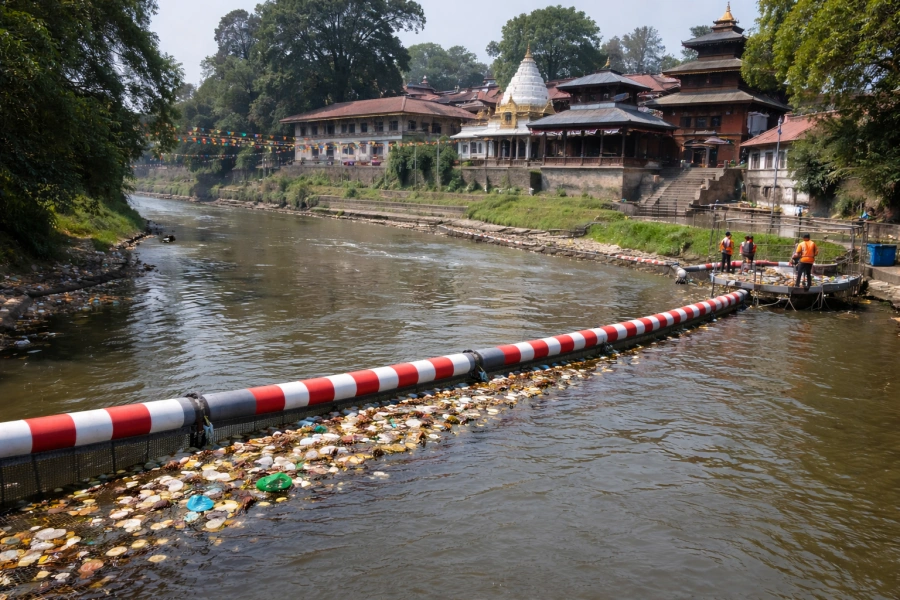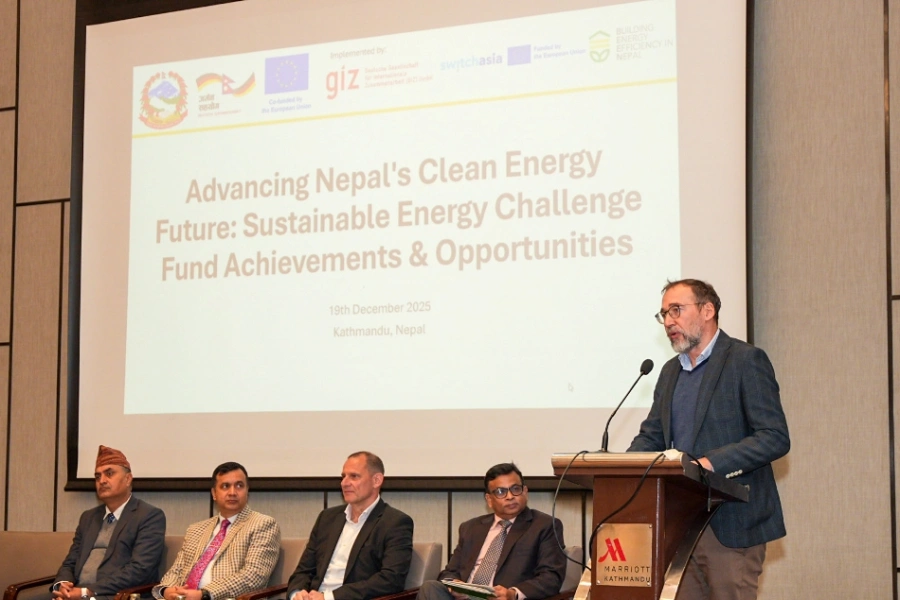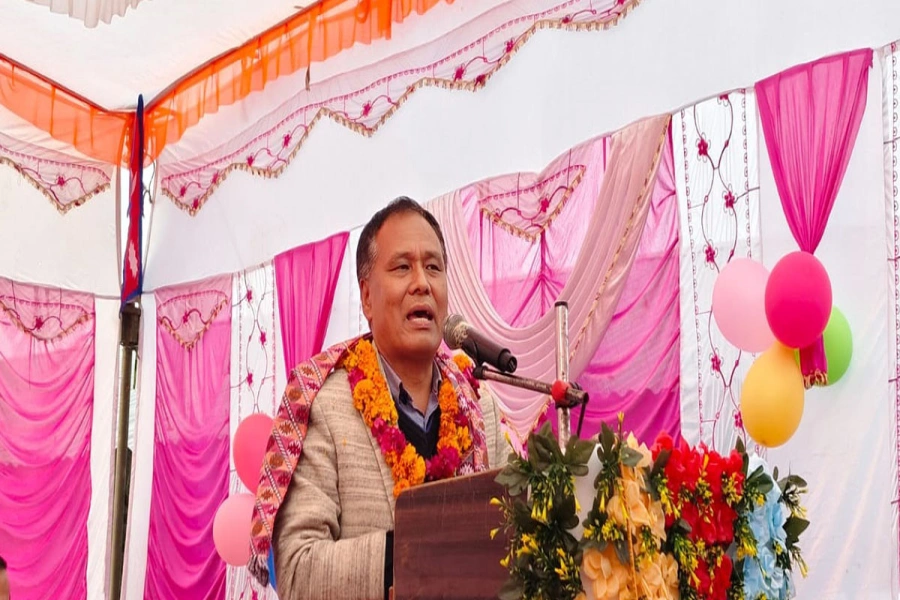Nepal’s participation in the 29th Conference of the Parties (COP to the UN Framework Convention on Climate Change (UNFCCC) in Baku, Azerbaijan, which began on 11 November 2024, has drawn global attention to the country’s climate challenges. Led by the Honorable President, Nepal’s delegation is discussing key issues such as climate change mitigation, loss and damage fund, climate justice, and adaptation strategies. Despite this, concrete actions and decisions remain elusive from past COPs, and Nepal's climate vulnerability continues to worsen. Although Nepal contributes only 0.02% to global carbon emissions, the country faces disproportionately severe climate impacts, which raises the question: why is Nepal's voice not being heard on the global stage?
Nepal has been grappling with the devastating effects of climate-induced disasters. In recent years, floods, landslides, and glacial lake outbursts have caused the loss of hundreds of lives and billions of dollars in damage. The recovery process remains slow and difficult. Nepal is doing its part by implementing an ambitious Nationally Determined Contributions (NDC) plan to reduce emissions, increase forest cover, and promote clean energy. However, these efforts are undermined by the ever-growing climate impacts, forcing the country to divert resources from poverty alleviation to climate adaptation, exacerbating social and economic inequalities.
Key Climate Concerns in Nepal
A recent incident in Thame village in Solukhumbu highlighted the vulnerability of Nepal’s high-altitude communities to climate-induced disasters. The village, located near several glacial lakes, was swept away by a flood caused by a glacial lake being outburst. Fortunately, the local herders were able to warn villagers in time, and no casualties were reported. However, the threat remains, as several other glacial lakes in the region are at risk of bursting, potentially affecting Nepal’s southern settlements due to the geographical proximity to Tibet, China. A scientific study has identified 47 glacial lakes in the Hindu Kush Himalayan range, spanning across Afghanistan, Bangladesh, Bhutan, China, India, Myanmar, Nepal, and Pakistan, which are at risk of sudden outbursts.An even more troubling concern is that Nepal is often left in the dark about the risks posed by these lakes, particularly those in Tibet, due to China’s reluctance to share timely information citing "security reasons." This lack of cooperation places Nepal at further risk.
Climate change is driving both internal and external migration in Nepal. Himalayan, hilly, and Terai regions are being severely impacted by changing climate patterns, forcing people to leave their ancestral lands in search of safer, more sustainable environments. Districts such as Manang, Mustang, Humla, Dolpa, Kalikot, Ramechhap, and Bajhang are experiencing high rates of displacement. Dwindling water sources, particularly the drying up of traditional water sources like wells and hand pumps, are adding to the crisis. In places like Upper Mustang, entire communities like Dhe and Samjong have been forced to migrate to lower altitudes in search of water and cultivable land, a trend that has been ongoing for more than a decade.
Nepal’s struggle with water scarcity, combined with increasing temperatures and disrupted crop patterns, is also contributing to rising climate-induced migration. Additionally, climate-related disasters have significantly harmed livelihoods, further prompting migration both within Nepal and abroad. The Department of Foreign Employment reports that 700,000 Nepalis migrate annually for work, with many heading to the Gulf countries and Europe, while 150,000 go abroad for education. While climate change is not the sole driver, it plays a significant role in escalating this trend.
SHIFT for Our Planet: Youths urge authorities to make climate j...

A national survey conducted by the National Statistics Office in 2022 shows that 14% of households reported the deterioration of water sources due to climate change, while 78.3% reported declining river and stream water levels, and 55% indicated reduced use of traditional water sources like wells and stone spouts.
Local Solutions and Global Attention Needed
To mitigate the impacts of climate change, several local and global actions are necessary:
Local Solutions:
·Promote scientific research on climate change and increase public awareness about its impacts.
·Prioritize community-based adaptation and mitigation measures, emphasizing coordination among national, provincial, and local governments, as well as private and non-governmental sectors.
·Develop a special action plan to foster the use of climate change adaptation technologies, with a focus on capacity-building at all government levels.
·Advocate for local issues in national and international climate forums, ensuring that the voices of vulnerable communities are heard.
·Ensure the establishment of a climate fund that focuses on climate change adaptation and mitigation, with transparent management and implementation.
·Encourage climate-friendly development, adhering to the principle that development should be environmentally sustainable.
Global Community's Role:
·Climate finance pledged by developed nations has been insufficient, and complex processes have hindered access for vulnerable communities. The Loss and Damage Fund, established to support countries like Nepal, must be swiftly operationalized.
·Developed nations should provide adequate financial support for technology transfer and capacity-building in line with the Paris Agreement.
·Concrete commitments must be made by developed countries to ensure climate justice, with new collective targets for climate finance, based on equity and capacity, and a global effort to limit global warming to 1.5°C.
Conclusion
Nepal, despite its minimal contribution to global emissions, is disproportionately affected by the severe impacts of climate change. The country is facing a dire situation, with increasing migration, loss of livelihoods, and damage from disasters such as floods, landslides, and glacial lake outbursts. While Nepal continues to make strides with its NDC and efforts toward sustainability, the global community, especially the developed countries, must step up their commitments. Climate justice, financial support, and technology transfer are crucial for addressing Nepal’s vulnerabilities and ensuring a sustainable future for its people.







































